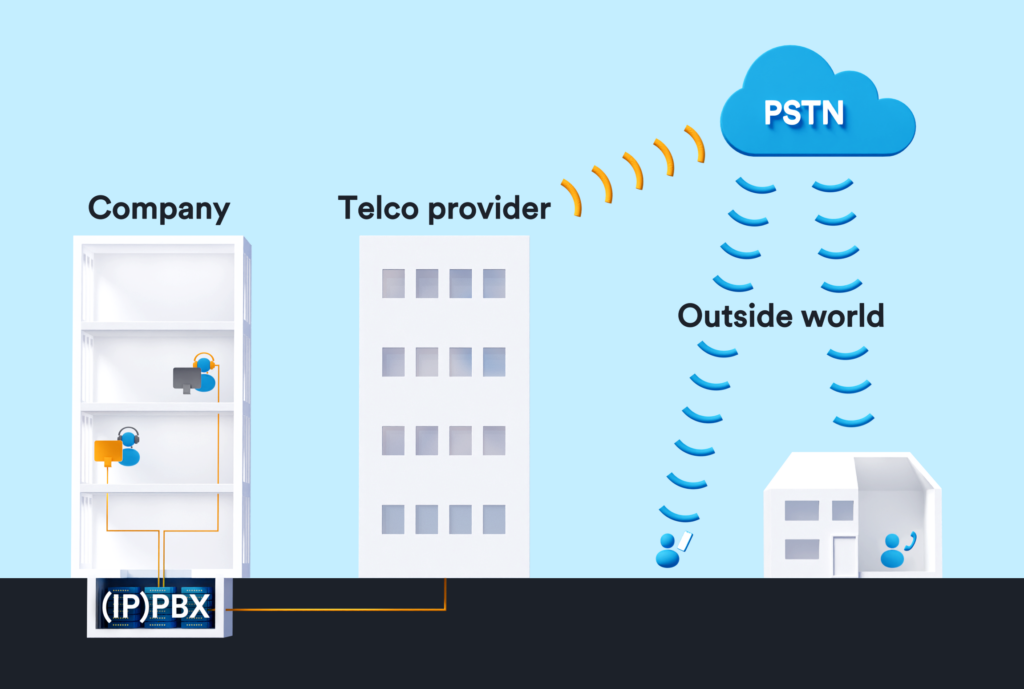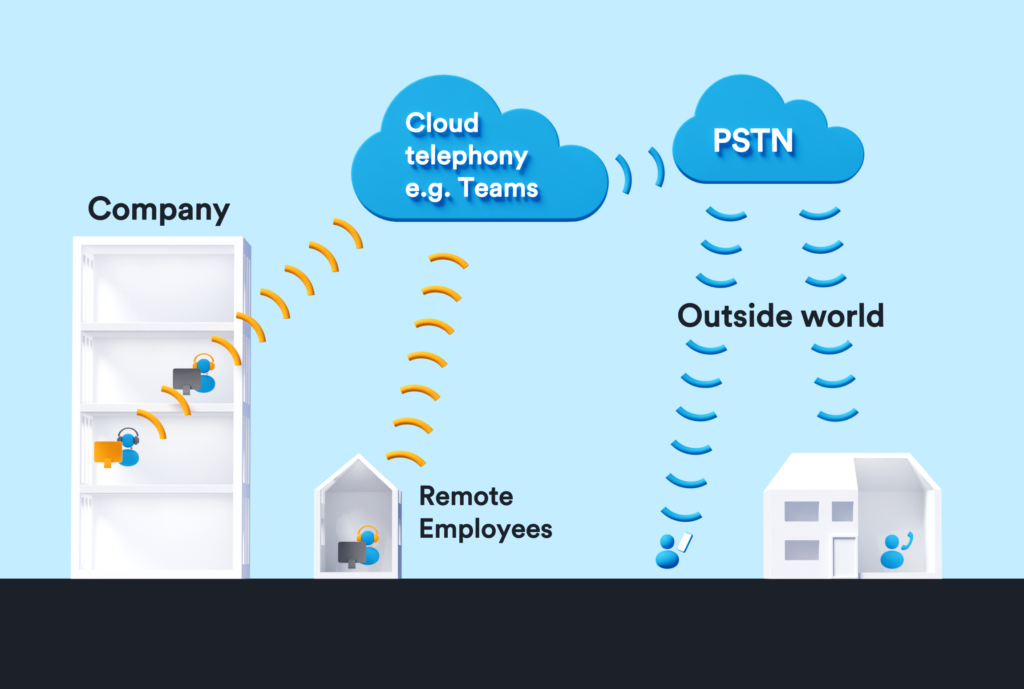Cloud telephony is vital to ensure effective communication in hybrid workplaces. But what exactly is cloud telephony? And what does it have to do with Microsoft Teams? These are the questions that we will tackle in this blog.
41% of employees say they would quit their job if they were not able to work remotely. Consequently, organizations are under increasing pressure to move their infrastructure into the cloud to enable a hybrid workplace. It gives employees the flexibility to work from anywhere, whilst organizations benefit from scalable technologies and a simplified IT infrastructure.
Cloud telephony is an essential aspect of any cloud strategy. It enables employees to initiate and receive calls from any device connected to the internet and thereby ensures a consistent calling experience.
Businesses used to rely on a Private Branch Exchange (PBX) for their telephony (such as Avaya, Cisco, Mitel, or Skype for Business). A PBX is a telephone system for businesses that allows users to call internally with people in their company as well as externally with the outside world. They are either based on analog, ISND, or Voice over IP technology. Traditionally, these PBX systems ran on servers that were maintained by the company itself. To make calls with the outside world, organizations need to connect their PBX to the Public Switched Telephone Network (PTSN) through a telco provider.
It is possible for employees to work remotely when using a PBX – with workarounds. Because the telephones are bound to the company location, employees cannot just take them home. VPNs and separate desktop or mobile clients make it possible to handle calls remotely – but this approach is a hideous user experience.

Telephony using (IP) PBX systems
With cloud telephony all the on-site infrastructure is taken to a server in the cloud that can be accessed via the internet. Like in a traditional PBX, calls are routed to a phone number, but instead of being attached to a physical device, the number is virtual. Employees can initiate and receive business calls with any device connected to the internet. Most cloud telephony solutions come as a service model including hosting, maintenance, and updates.
Cloud telephony gives employees increased freedom and flexibility. They are no longer tied to a desk with a physical phone but can take calls from anywhere. That way, the calling experience is streamlined throughout the organization for users worldwide. Organizations no longer need to maintain on-site hardware and IT efforts are minimized.

Telephony using cloud solutions
For organizations that are already using Microsoft Teams for collaboration or intend to do so, it is interesting to also consider it as a phone system. Microsoft’s answer to these old PBXs is the Microsoft Phone System. It extends the Voice over IP (VoIP) capabilities of Teams and turns it into a full-fledged business phone system. It allows users to use to initiate and receive calls using Teams.
Users can use their laptop with a headset or their mobile device to handle calls in Teams. For organizations that prefer the old-school feel to calling, compatible classical hardware phones are also available.
It’s also possible to make external calls with Microsoft Teams by connecting it to the Public Switched Telephone Network (PTSN). Stay tuned for our next blog, where we explain the different options for achieving this.
Get in touch with one of our partners

10.05.2022